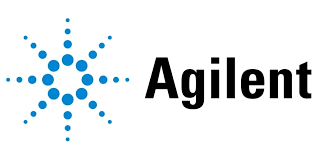Ai In Medicine Diagnosis
Published Date: 15 December 2025 | Report Code: ai-in-medicine-diagnosis
Ai In Medicine Diagnosis Market Size, Share, Industry Trends and Forecast to 2033
This report provides a comprehensive analysis of the AI in Medicine Diagnosis market over the forecast period 2024 to 2033. It examines key market trends, segmentation, regional dynamics, technological innovations, and growth outlook. Insightful data and forecast metrics will aid stakeholders in understanding market trajectories and strategic opportunities within this rapidly evolving domain.
| Metric | Value |
|---|---|
| Study Period | 2024 - 2033 |
| 2024 Market Size | $10.00 Billion |
| CAGR (2024-2033) | 8.2% |
| 2033 Market Size | $20.79 Billion |
| Top Companies | MedAI Solutions, HealthTech Innovators |
| Last Modified Date | 15 December 2025 |
Ai In Medicine Diagnosis (2024 - 2033)
Ai In Medicine Diagnosis Market Overview
Customize Ai In Medicine Diagnosis market research report
- ✔ Get in-depth analysis of Ai In Medicine Diagnosis market size, growth, and forecasts.
- ✔ Understand Ai In Medicine Diagnosis's regional dynamics and industry-specific trends.
- ✔ Identify potential applications, end-user demand, and growth segments in Ai In Medicine Diagnosis
What is the Market Size & CAGR of Ai In Medicine Diagnosis market in 2024?
Ai In Medicine Diagnosis Industry Analysis
Ai In Medicine Diagnosis Market Segmentation and Scope
Tell us your focus area and get a customized research report.
Ai In Medicine Diagnosis Market Analysis Report by Region
Europe Ai In Medicine Diagnosis:
Europe is making notable progress with its AI in Medicine Diagnosis market, which has grown from a market size of 2.51 in 2024 to an anticipated 5.23 by 2033. Advanced healthcare systems and robust regulatory support are key factors bolstering this growth.Asia Pacific Ai In Medicine Diagnosis:
In the Asia Pacific region, the AI in Medicine Diagnosis market is experiencing steady growth. With a market size of 1.95 in 2024 projected to expand to 4.05 by 2033, factors such as technological innovation and increasing healthcare investments are the primary catalysts driving this upward trend.North America Ai In Medicine Diagnosis:
North America remains a dominant and mature market for AI in Medicine Diagnosis, with its market size reaching 3.81 in 2024 and projected to grow to 7.92 by 2033. Strong R&D investments, advanced technological infrastructure, and early adoption trends drive this region’s growth.South America Ai In Medicine Diagnosis:
Represented by Latin America data, the South American market is observing progressive adoption of AI diagnostic technologies. The region’s market, which was valued at 0.53 in 2024 and is expected to reach 1.09 by 2033, benefits from ongoing healthcare modernization initiatives and supportive government policies aimed at digital transformation.Middle East & Africa Ai In Medicine Diagnosis:
The Middle East and Africa region is gradually embracing AI in diagnostics. With a market size of 1.20 in 2024 set to expand to 2.50 by 2033, increased healthcare investments and a concerted focus on digital transformation are driving market progression in this region.Tell us your focus area and get a customized research report.
Ai In Medicine Diagnosis Market Analysis By Technology
Global AI in Medicine Diagnosis Market, By Technology Market Analysis (2024 - 2033)
The technology segment is a cornerstone of the AI in Medicine Diagnosis market. Innovations in machine learning, natural language processing, and computer vision are transforming traditional diagnostic methodologies. Machine learning leads this segment with a market size of 6.22 in 2024 and is expected to grow to 12.93 by 2033, capturing a 62.2% share. Complementary technologies such as NLP and computer vision are also making significant contributions by enhancing image analysis capabilities and data interpretation. Continued investments in research and development are driving these technological advancements, which in turn improve diagnostic accuracy and operational efficiencies. This progress in technology is essential for companies aiming to maintain competitive advantages in a rapidly evolving market environment.
Ai In Medicine Diagnosis Market Analysis By Application Area
Global AI in Medicine Diagnosis Market, By Application Area Market Analysis (2024 - 2033)
The application area segment encompasses critical medical specialties including radiology, pathology, cardiology, oncology, and neurology. Radiology stands out with a market size of 4.32 in 2024, forecasted to reach 8.98 by 2033, and holds a 43.19% market share. Other application areas continue to exhibit steady growth with proportional market sizes and stable shares. The integration of AI-driven solutions in these fields is revolutionizing diagnostic processes by providing enhanced precision and faster turnaround times. Improved diagnostic accuracy in these specialties not only elevates patient care but also drives operational efficiencies across healthcare institutions. As AI technologies become more entrenched in these application areas, further diversification and innovation are anticipated, paving the way for broader adoption and groundbreaking advancements in medical diagnostics.
Ai In Medicine Diagnosis Market Analysis By End User
Global AI in Medicine Diagnosis Market, By End-User Market Analysis (2024 - 2033)
The end-user segment highlights the substantial reliance on AI-powered diagnostics by hospitals, diagnostic laboratories, research institutes, and other healthcare entities. Hospitals currently lead with a market size of 5.48 in 2024, expected to grow to 11.40 by 2033, while maintaining a stable share of 54.83%. Diagnostic laboratories contribute significantly with a market size of 2.26 and a 22.62% share, supplemented by research institutes and other end users that collectively stabilize the market dynamics. The substantial adoption of AI in clinical settings underscores the demand for improved diagnostic speed, accuracy, and efficiency. Investments in AI-enhanced diagnostic tools are gradually transforming traditional clinical workflows, ensuring that healthcare providers can deliver faster and more reliable patient care.
Ai In Medicine Diagnosis Market Analysis By Region Development
Global AI in Medicine Diagnosis Market, By Regional Development Market Analysis (2024 - 2033)
The regional development segment sheds light on the geographic variances in the adoption and growth of AI diagnostic solutions. Analyses across North America, Europe, Asia-Pacific, Latin America, and the Middle East & Africa reveal diverse market maturity levels driven by varying regulatory environments, economic conditions, and healthcare infrastructures. North America and Europe lead with strong technological support and substantial investments, while Asia-Pacific and Latin America are rapidly catching up through increased digital transformation initiatives. The Middle East & Africa, though emerging, is steadily improving its healthcare infrastructure to support AI integration. This segmentation enables companies to tailor their market strategies based on regional strengths and identify specific opportunities to bolster growth and operational performance.
Ai In Medicine Diagnosis Market Trends and Future Forecast
Tell us your focus area and get a customized research report.
Global Market Leaders and Top Companies in Ai In Medicine Diagnosis Industry
MedAI Solutions:
MedAI Solutions is a leading innovator in AI-driven diagnostic technologies, offering state-of-the-art platforms that enhance diagnostic accuracy and streamline clinical workflows. Their commitment to R&D has positioned them as pioneers in the integration of AI with healthcare.HealthTech Innovators:
HealthTech Innovators specializes in developing advanced AI applications tailored for medical diagnostics. Known for its strategic collaborations with top hospitals and research institutes, the company continues to shape market trends through innovative solutions and robust technology investments.We're grateful to work with incredible clients.









FAQs
What is the market size of ai In Medicine Diagnosis?
The global market size for AI in medicine diagnosis is expected to reach $10 billion by 2033, with a compound annual growth rate (CAGR) of 8.2%. This growth reflects the increasing adoption of advanced technology in healthcare.
What are the key market players or companies in this ai In Medicine Diagnosis industry?
Key players in the AI in medicine diagnosis industry include established firms and startups specializing in healthcare technology. Prominent companies are focusing on developing innovative AI solutions that enhance diagnostic capabilities and improve patient outcomes.
What are the primary factors driving the growth in the ai In Medicine Diagnosis industry?
Growth in the AI in medicine diagnosis industry is driven by advancements in AI technologies, increasing demand for precision medicine, and the need for better patient outcomes. Additionally, the rising volume of health data fuels the adoption of data-driven diagnostic tools.
Which region is the fastest Growing in the ai In Medicine Diagnosis?
North America is the fastest-growing region in the AI in medicine diagnosis market, projected to grow from $3.81 billion in 2024 to $7.92 billion by 2033. Following closely are Europe and Asia-Pacific, showing significant growth potentials.
Does ConsaInsights provide customized market report data for the ai In Medicine Diagnosis industry?
Yes, ConsaInsights offers customized market report data for the AI in medicine diagnosis industry. Clients can request tailored insights that cater specifically to their research and business needs, ensuring relevance.
What deliverables can I expect from this ai In Medicine Diagnosis market research project?
Clients can expect comprehensive deliverables, including detailed reports, market analysis, forecast data, segment information, and insights into regional trends. These elements provide a well-rounded perspective on the market.
What are the market trends of ai In Medicine Diagnosis?
Current trends in the AI in medicine diagnosis market include increased investment in machine learning techniques, the integration of AI with existing healthcare systems, and a focus on enhancing diagnostic accuracy across specialties like radiology and oncology.
